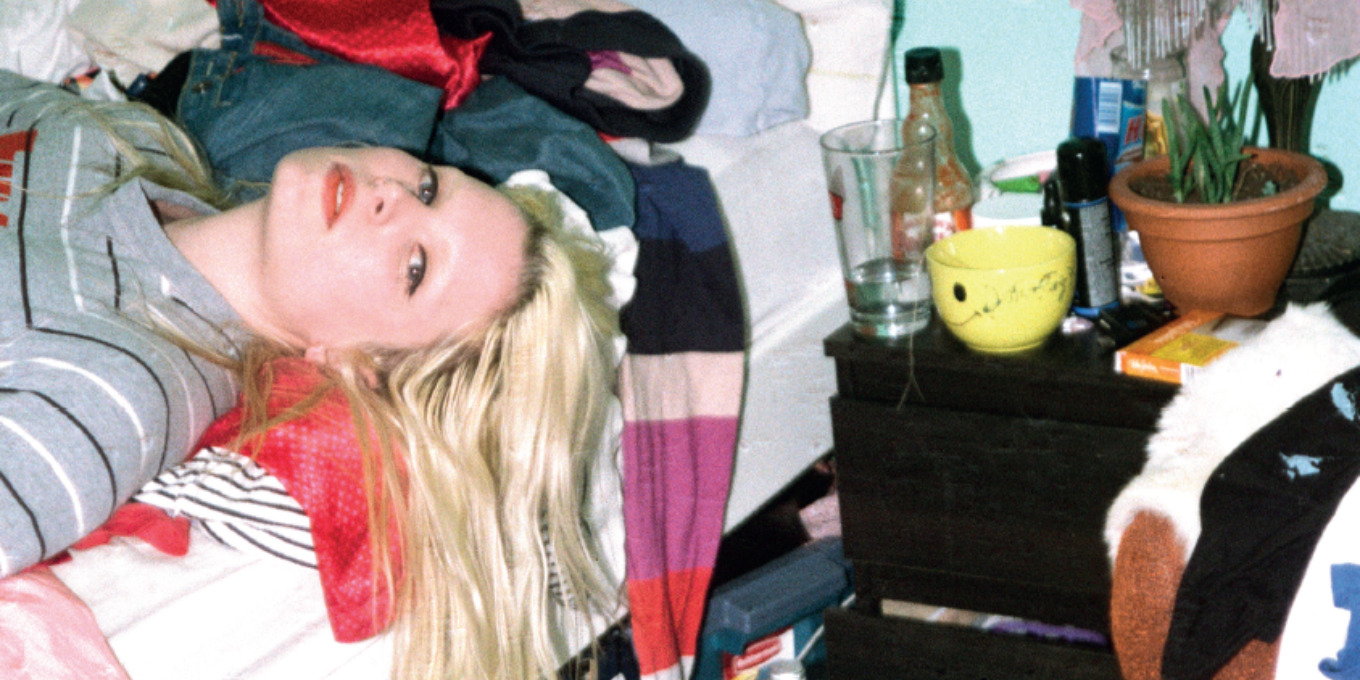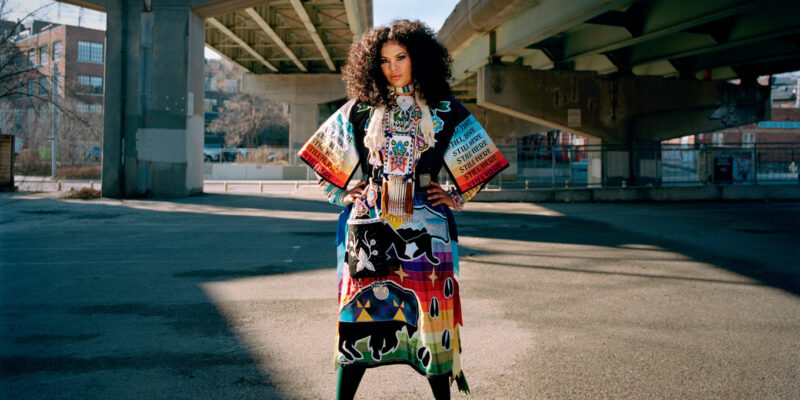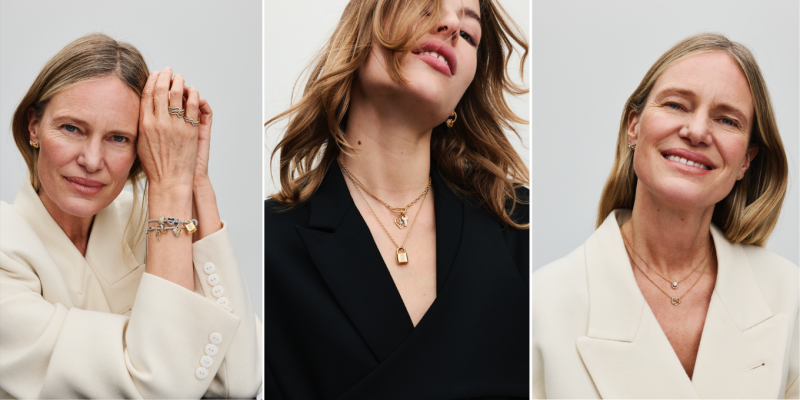Society
What Happens When Clutter Becomes Chaos?
For people struggling with their stuff, the de-hoarding community can help.
by : Eve Thomas- Jul 19th, 2023

Maya Fuhr
When decluttering guru Marie Kondo told The Washington Post that she cares less about mess now that she’s raising three kids, it was met with a wave of relief—even vindication—from scores of women who’d felt personally judged by her popular books and Netflix series. “Where’s the official apology?” tweeted Canadian film director Sarah Polley (later clarifying that she was only joking). Whatever your thoughts on the KonMari method, the backlash made one thing clear: A lot of people struggle with clutter, and it’s a struggle that’s connected to identity and security as well as things that happened in the past and visions of the future.
Personally, I’ve always had a magpie’s love of shiny treasures, a weakness for wonky ceramics and thrifted cashmere and a few too many junk drawers. But it was only when I started packing up to move house that I was confronted with the emotional weight of all my possessions. It was less “sparking joy” and more “mounting dread.” After desperately searching for a useful decluttering guide and even trying Reddit forums and YouTube affirmations, I found real help from an unexpected source: the world of de-hoarding.
“Hoarding” is an admittedly scary word. It evokes images of expired food, neglected pets, court-ordered cleanups and nosy neighbours. Having only been classified as a distinct mental disorder by the American Psychiatric Association in 2013, it is defined by a persistent difficulty with discarding or parting with possessions, regardless of their actual value, and is often accompanied by a need to acquire more items. While a whopping 91 percent of Canadians claim that clutter negatively impacts their lives, only an estimated 2 to 5 percent of the population actually suffers from hoarding disorder. But that number may be low due to a still-evolving understanding of the illness itself (which was originally linked to OCD) as well as widespread silencing stigma. In popular culture, hoarding is fodder for prestigious documentaries like Grey Gardens and exploitative reality TV like Hoarders and Buried Alive—shows that put emotionally distressed people through extreme home makeovers so audiences can delight in drastic before and after shots.
“The solution on these shows is ‘Let’s get it all out,’ which experts agree isn’t effective in the long term,” says the anonymous host (who calls herself “The Hoarder” and whom we will call “TH” here for clarity) of the Overcome Compulsive Hoarding (OCH) podcast from her home in the U.K. “You’ve got to address the emotional stuff or it will recur. ‘Why can’t I let this go? Why do I keep bringing this in?’” TV hoarders are presented as utterly unrelatable, their trauma overblown. But, as TH notes in one episode, “When owning an object is part of our identity…then losing that item feels like a threat to our very self.”
TH started OCH as a sort of journal about “drowning in stuff and trying to get out,” not sure if anyone would listen. She couldn’t even say the word “hoarder” aloud until it launched. Now, within the confines of the show, she is open about her struggles, her formative periods of poverty, her experience with cognitive behavioural therapy and what she calls “an embarrassing amount of inner dialogue.”
OCH has reached the top 2.5 percent of podcasts worldwide, with listeners as far away as the Bahamas and Japan (where cluttered homes are called gomi yashiki). Some fans have mild hoarding tendencies, while others are on the brink of eviction; some struggle with mess due to depression, ADHD or burnout; and many are just trying to understand loved ones who hoard. (And some, like me, are asking themselves why they’re packing the espresso maker they haven’t used in a decade.) One episode tackles anthropomorphizing objects, while another explores the “endowment effect”—the way we imbue things with value more when we own them. I’m reminded of garage sales and clothing swaps where people don’t want to let an item go without sharing its story, insisting, “This is really worth something; somebody could use this.”
In another episode, professional organizer Tracy McCubbin identifies a series of “emotional clutter blocks” that feel all too familiar. Some examples are “My stuff keeps me trapped in the past” (in my case, old concert tickets), “Trapped with other people’s stuff” (a tray of costume jewellery) and “My fantasy stuff for my fantasy life” (unused art supplies, never-worn high heels). Some hoarders’ thought processes seem alien, while others’ are so common they’re clichés. Have you ever kept a dress that didn’t fit? Stocked up on a bargain at the grocery store? Let the “good china” gather dust in the cupboard? Saving something for a special occasion is hardly disordered thinking—until “something” is too many things and that “special occasion” never comes. “That’s the thing: This exists in all of us to some degree,” says TH. “Everyone’s bought something they didn’t need and kept something they didn’t like. I’m interested in what flips the switch.”
If ever there was a time for switch flipping, the early pandemic was it. Control was in short supply, and package deliveries proved a reliable dopamine hit. I spoke to a friend who lost her job and started selling her old clothing online—only for her bedroom to get taken over by “doom piles” of unsold clothing. Another was renovicted during lockdown and found herself in a strange new neighbourhood with only her moving boxes—which she couldn’t seem to unpack—for company. One entertained herself with online auctions—partly for the thrill of the hunt and partly out of nostalgia for kitsch from her childhood. She even confessed that she would sometimes buy antiques that had no bids because she “felt bad for them.” Though my friends felt some distress, their habits weren’t particularly extreme—not in this world of one-click purchases, retail therapy, product hauls and unboxing videos, all of which are essentially telling us: “Buy all the stuff!” Just make sure it’s out of sight (or tagged #cluttercore) when you get pinged by BeReal.
“We’re ill-equipped as a species to deal with this,” observes Kathryn Jezer-Morton, a Montreal-based academic and the author of momfluencer newsletter Brooding, which deals with feminine ideals and conspicuous consumption. “Most of us are taking in more stuff than we need because everything is suddenly so cheap and accessible. Along with being a good consumer, you have to constantly be purging. The managing of stuff is a challenging executive-function skill we’re not really taught.” Basically, we know how to hunt and gather but not what to do when the cave is full—we have a scarcity mindset in an abundant, Dollarama-filled world. It’s a balancing act for the influencers Jezer-Morton studies. “Admitting you have too many clothes or beauty products is acceptable—even aspirational—because it’s contained in one area of your house,” she says. “But admitting to a general issue in your living space goes too far. Being ‘messy’ might be okay—it’s that manic-pixie-dream-girl energy. But ‘dirty’ is hard to come back from if you’re a woman because it’s tied to personal hygiene and sloppiness.” TH reveals that most fans contact the show through direct messages or emails rather than giving public likes and shout-outs, which even gory true-crime podcasts get. The message is clear: Hoarding is bad for anyone’s personal brand.
“Your home does not exist to hold on to the ghosts of everyone you’ve ever met or every dream you’ve ever had or every purchase you’ve ever made.”
“We say in hoarding treatment that the goal is a safe home, not a beautiful home, because what counts as beautiful depends on social structure, socio-economic class and your background,” says Sheila Woody, director of the University of British Columbia’s Centre for Collaborative Research on Hoarding. The centre provides scientific research and practical resources to people on the front lines, like firefighters and social workers, who are dealing with extreme cases.
Yet even these begin with good intentions and generosity, not laziness or stinginess (media-driven stereotypes)—like someone who keeps old tools in case they need to lend them out or a refugee from a war-torn country who doesn’t dare part with anything. “Someone who says ‘Excuse the mess’ to guests probably isn’t a hoarder, but someone who stops having guests over may be,” notes Woody. (Whether isolation is a cause or an effect is up for debate.)
Canadians who are worried about their habits can access the centre’s guide to regional support or use self-assessment tools like the Frost Clutter Scale, a series of nine images for different rooms (den, kitchen, bedroom); the first is tidy, but the clutter increases with each image, with the last frame being almost entirely filled. “To the layperson, this is a problem that could be solved with two strong guys and a truck,” says Woody of that last photo. “They don’t see the extreme angst of making decisions or parting with something and then feeling regret.” But even for those with “normal” amounts of mess—a chaotic closet or garage, say—fixes are rarely quick and often lonely, explains Woody. “Incremental progress is not very attractive when you’re faced with doing this very hard thing a little bit every day, all on your own, for a long time.”
On her podcast, TH does offer some concrete tips (with the caveats that she’s not a doctor and one size never fits all), such as taking a digital photo of an item before letting it go and exercising your “de-hoarding muscle” by doing easier jobs, like trashing junk mail. Mostly, though, she leans toward fostering validation, fighting shame and bringing hoarding into the mainstream so that it’s closer to anxiety or depression in terms of stigma and something you might be brave enough to take a sick day for or reach out to your real-life friends about.
When I think of my own possessions, I know I’ve held on to more than I should. I got through a few boxes of old agendas and yearbooks before decision fatigue set in and I left the rest of the task for my future self. But listening to OCH helped me curb some bad habits, like browsing the thrift store after dropping off donations or buying shiny new storage bins as a reward for tidying. Most of all, it felt nice to let the show play while I packed, with TH offering gentle encouragement and, occasionally, poetic mantras: “Your home does not exist to hold on to the ghosts of everyone you’ve ever met or every dream you’ve ever had or every purchase you’ve ever made.”
Often, listeners who have binged the whole show tell TH that they noticed a shift in her over the 80-plus episodes—that she got brighter, lighter and more optimistic. “If I’m always telling other people that hoarding shouldn’t be a source of shame, eventually I need to consider that for myself too,” she reasons. So what, in her opinion, would an honest, effective TV show about hoarding actually look like? It would be gradual and compassionate, and there would be a lot of internal work that’s invisible to the viewer. “It wouldn’t make for very dramatic television,” she admits. Most importantly, it would encourage empathy from the audience. For some, there might be a glimmer of the familiar. For others, they’d suddenly feel seen—maybe for the first time. And, above all, they’d feel a little less alone.
Read more:
27 Organized Spaces That Will Inspire Your Spring Cleaning
5 Steps to Spring Clean Your Wardrobe
Just A Super Useful Guide to Spring Cleaning Your Skincare Routine
Newsletter
Join our mailing list for the latest and biggest in fashion trends, beauty, culture and celebrity.
Read Next

Fashion
Bella Hadid Glows in a Strapless Lace Dress With a Sheer Corseted Bodice
Hadid was also seen that same day promoting her new fragrance brand ‘Ôrebella.
by : Briannah Rivera- May 3rd, 2024

Fashion
This Year’s Indigenous Fashion Arts Festival Is Sure to Impress
"Creating an opportunity for us to work collectively—prioritizing language and tradition—is of the utmost importance. Our similarities are inspired and shaped by the legacies left to us by our ancestors.”
by : Kelly Boutsalis- May 3rd, 2024

Fashion
8 Sparkling Jewellery Gifts to Give This Mother’s Day
Show your gratitude with pieces they’ll have forever and ever.
by : ELLE Canada- Apr 29th, 2024




